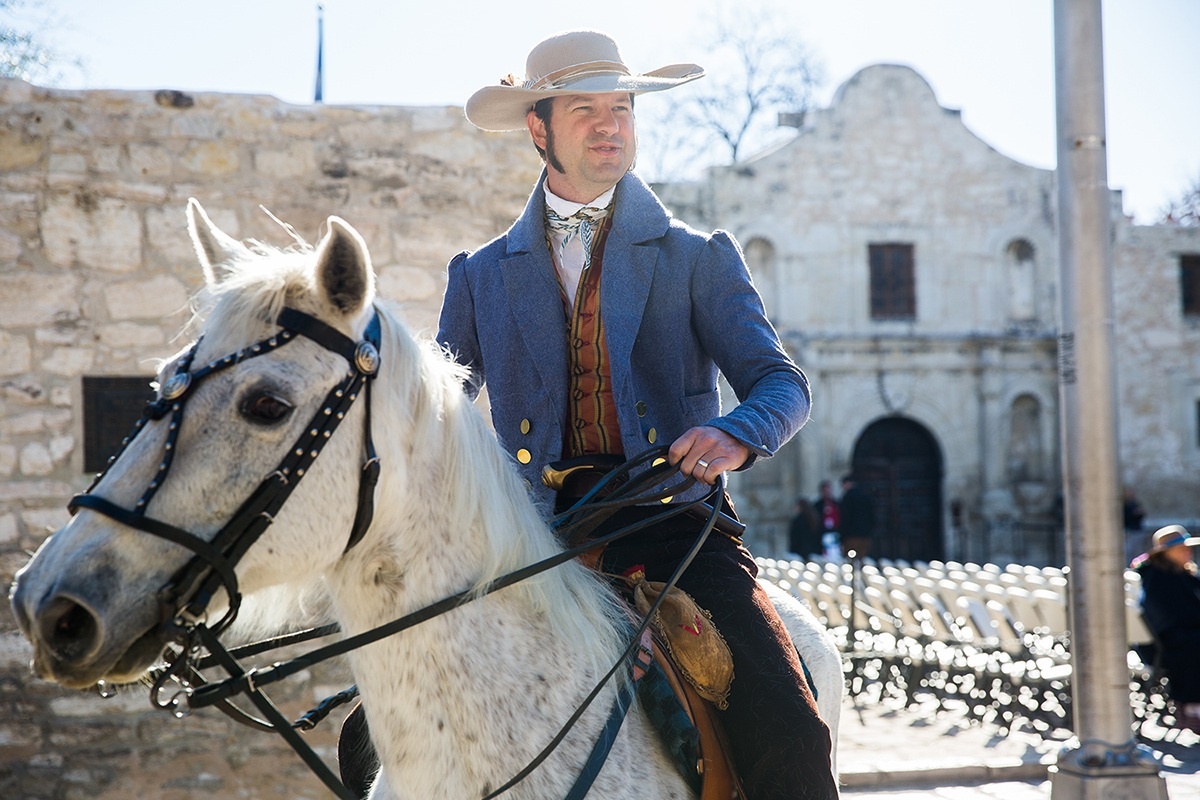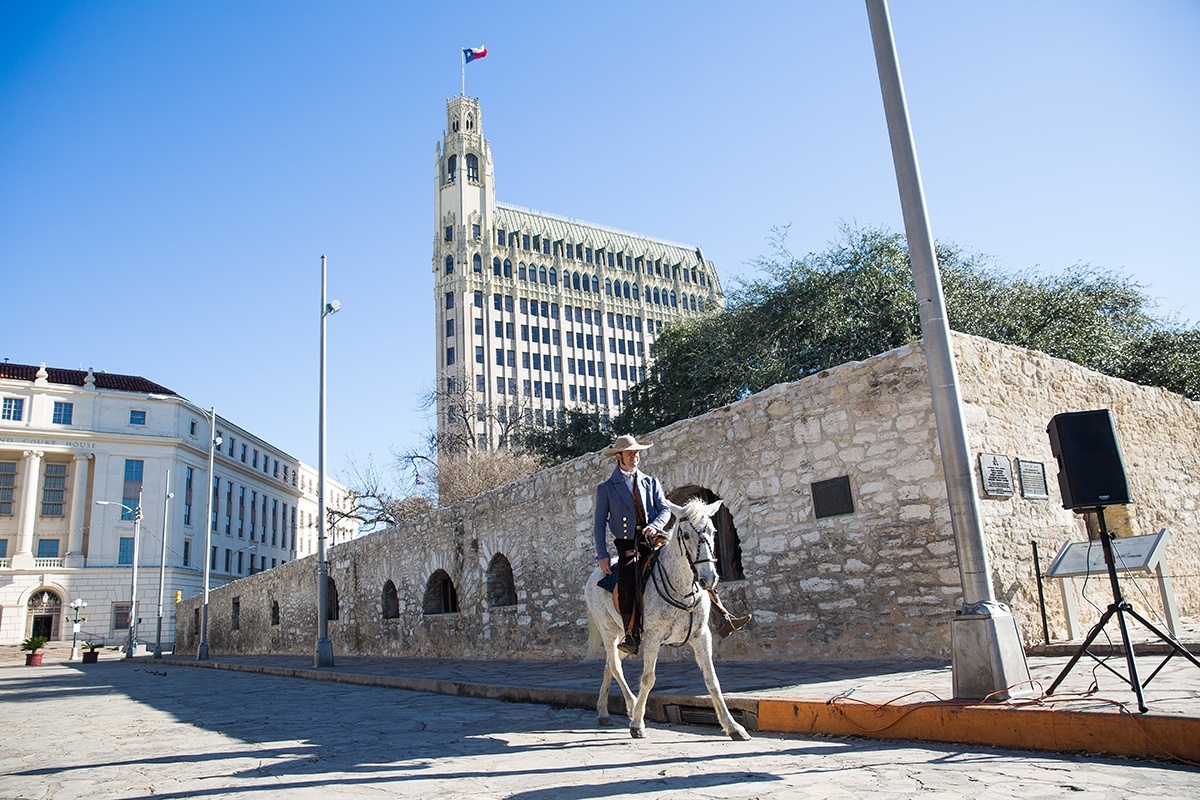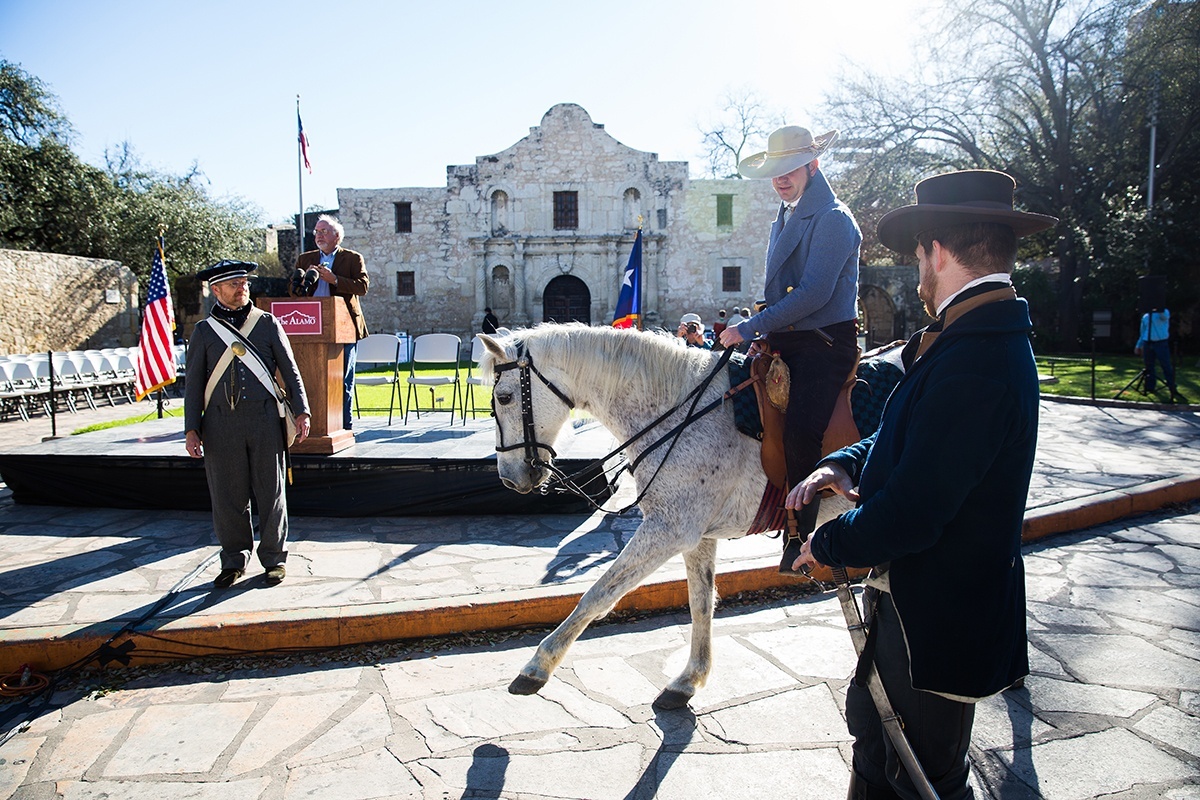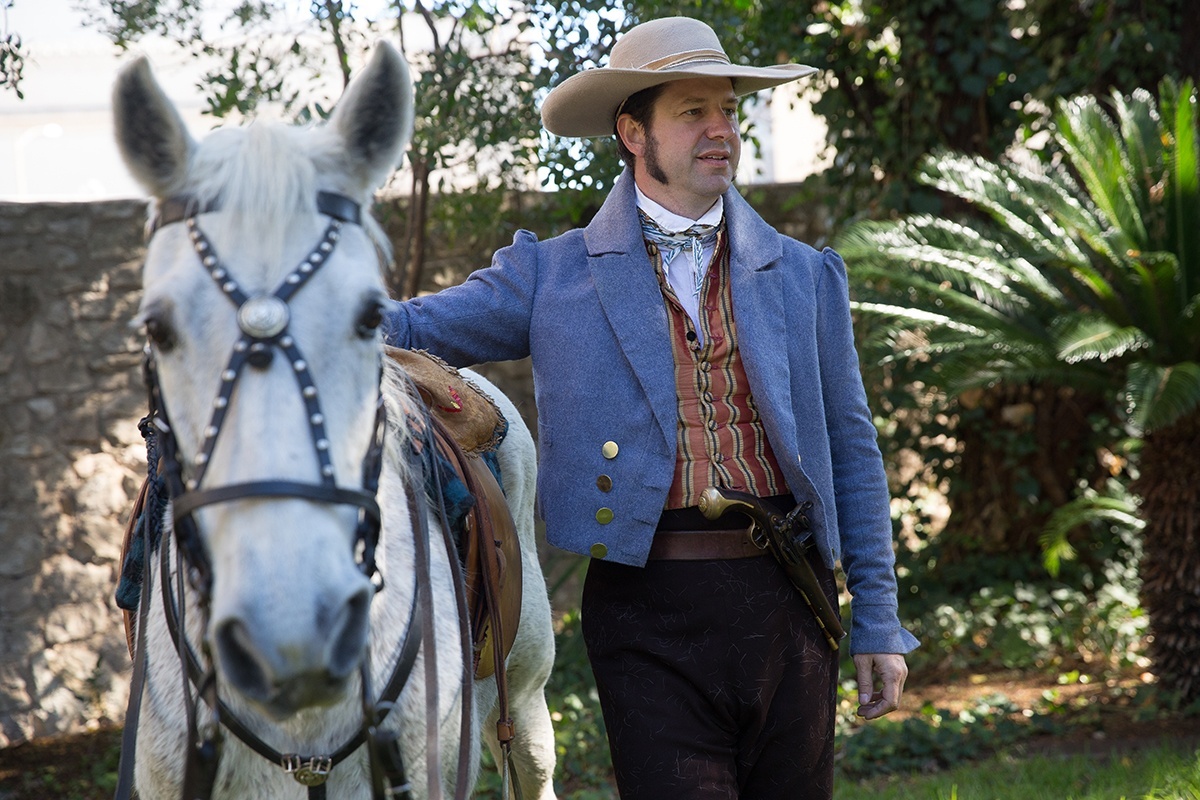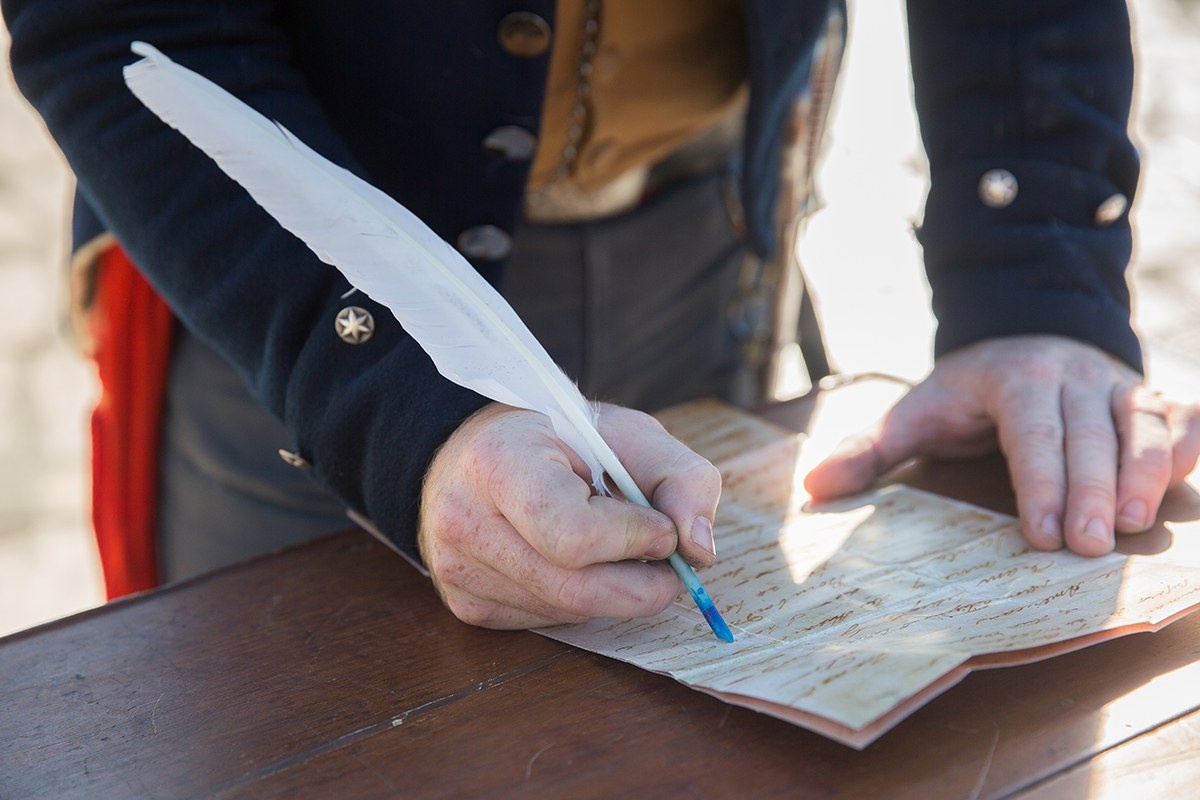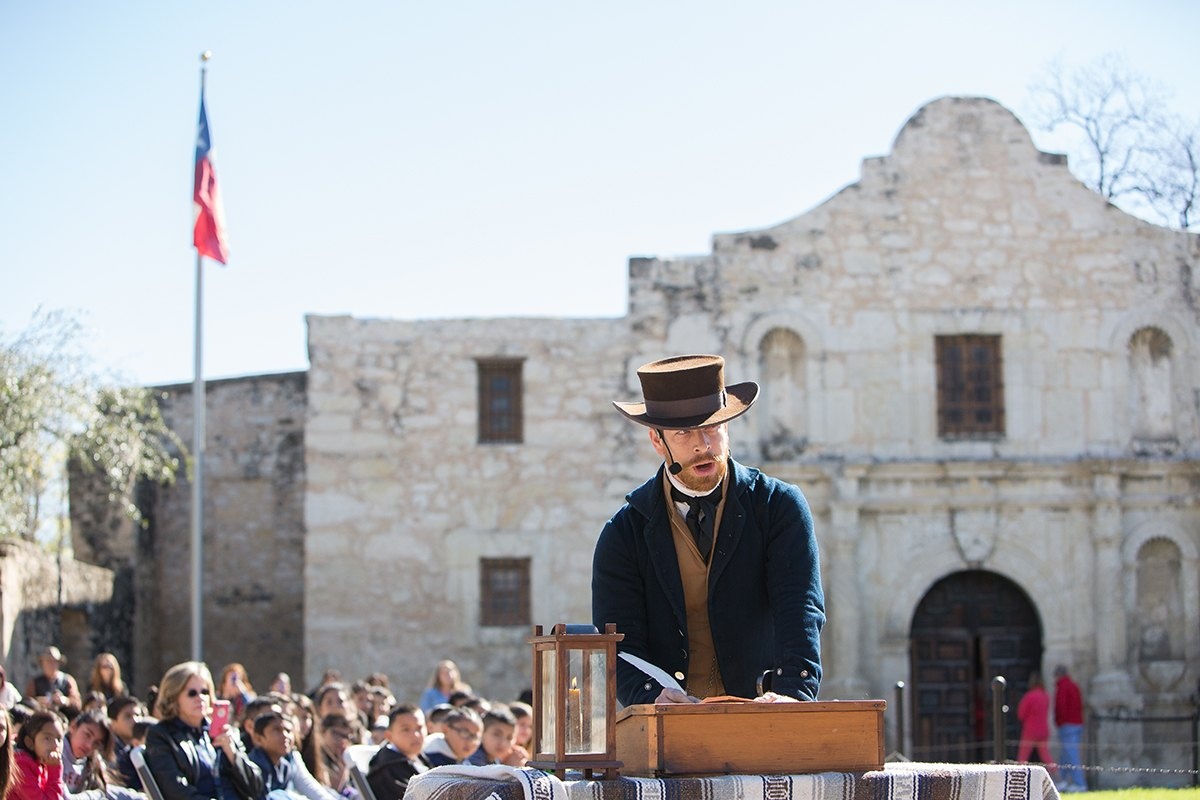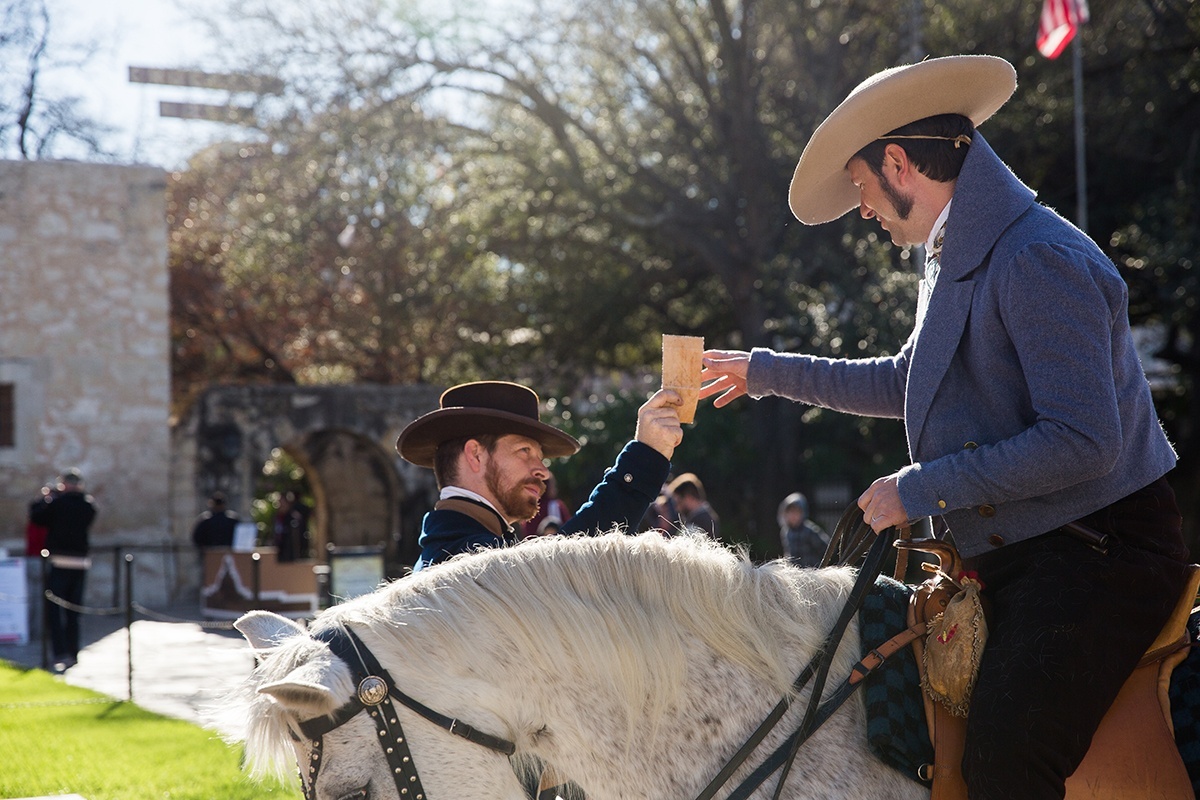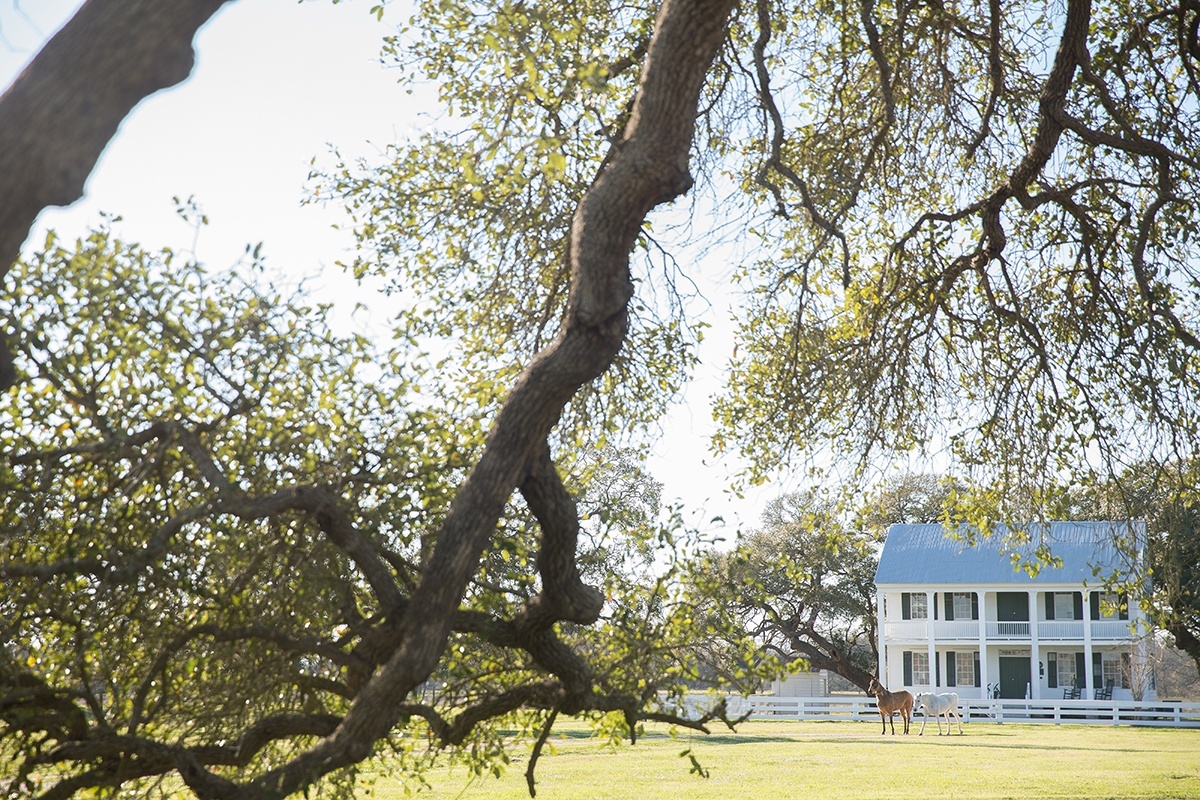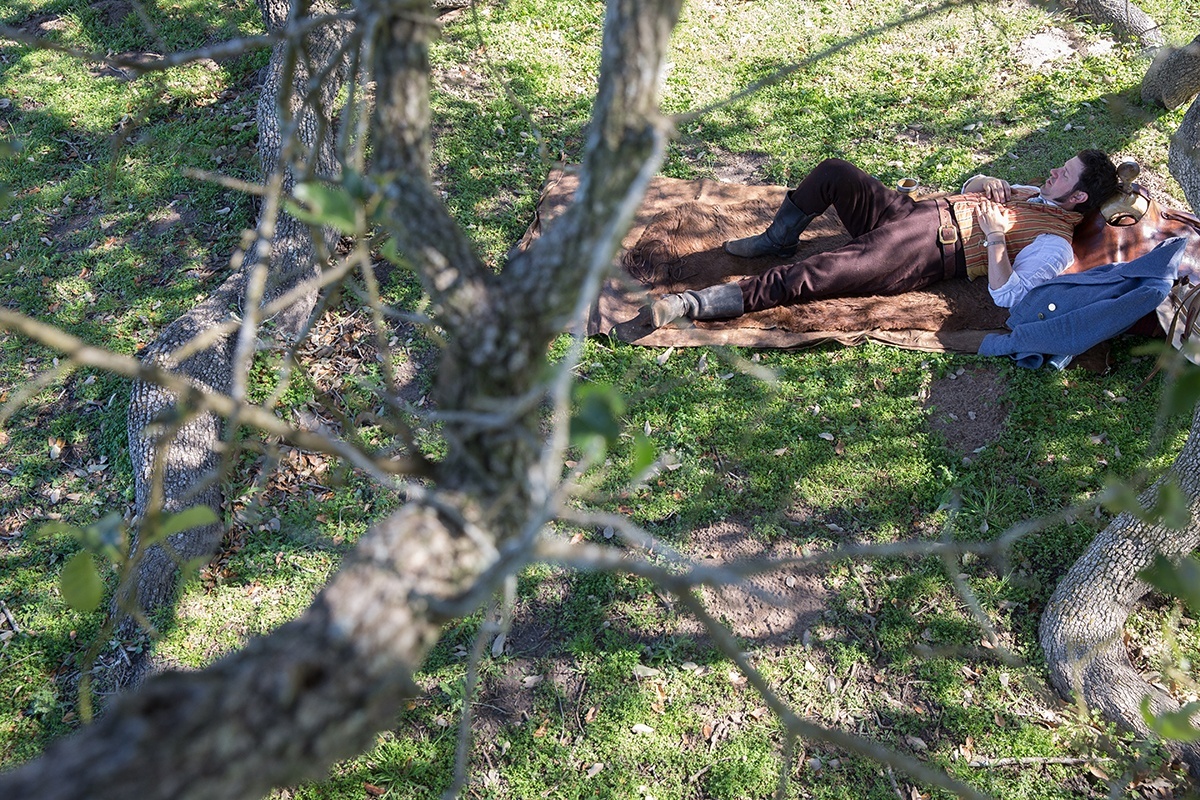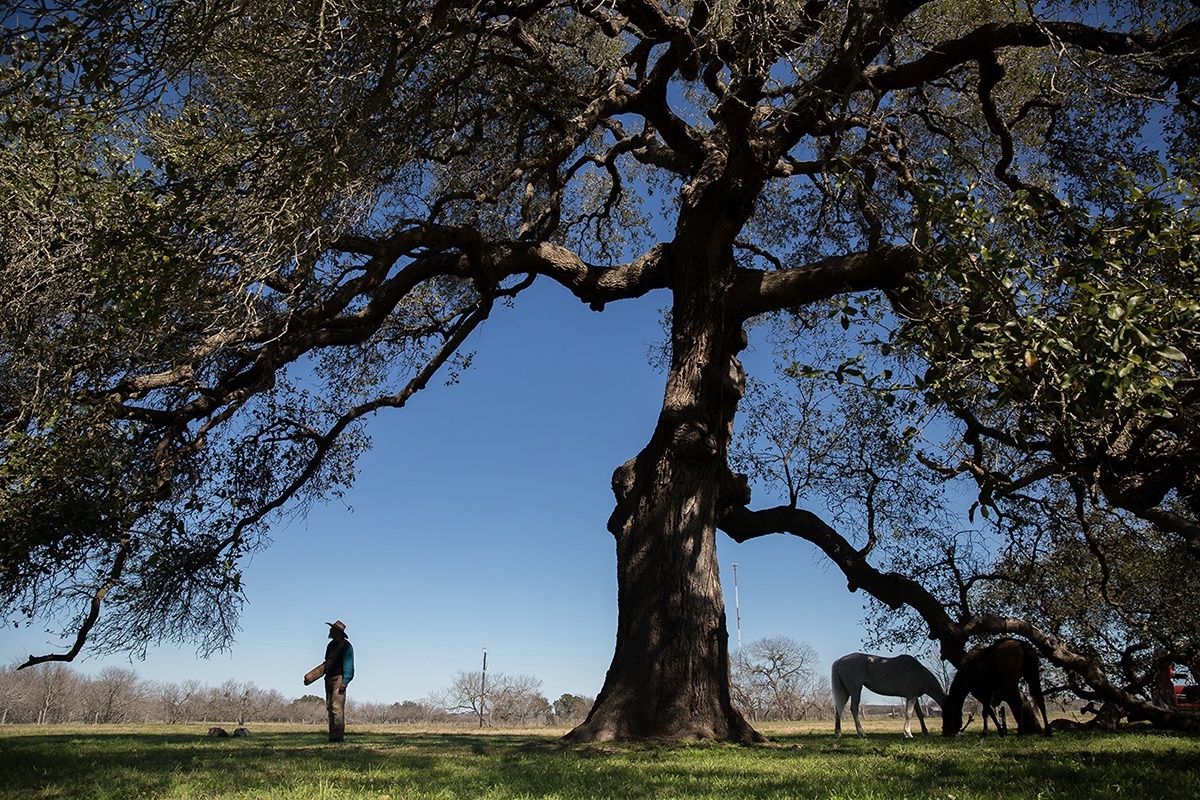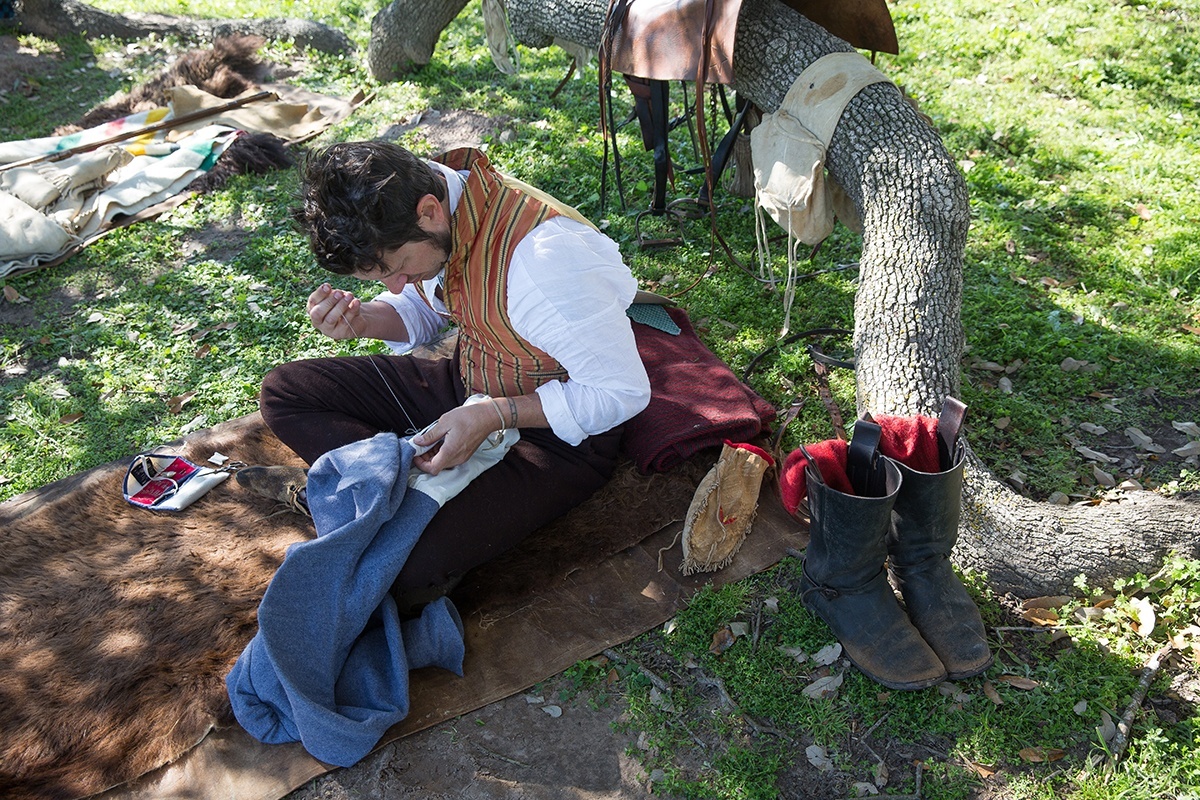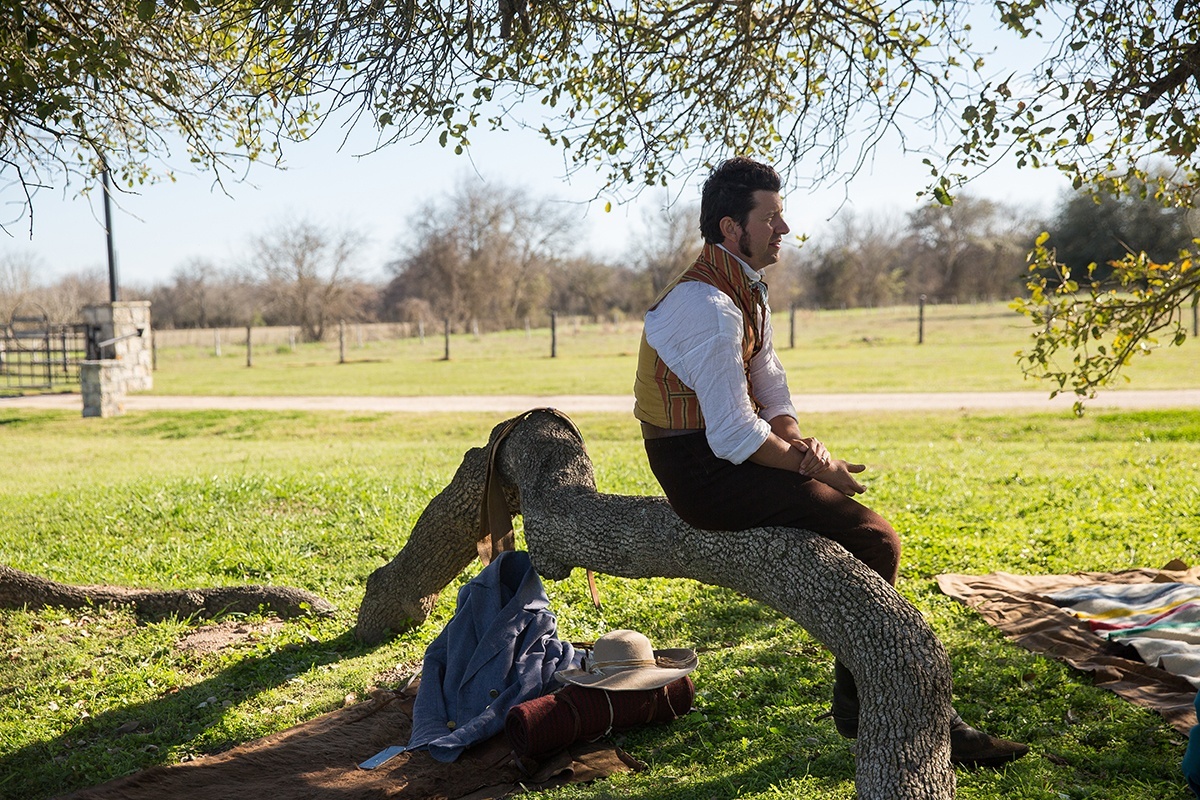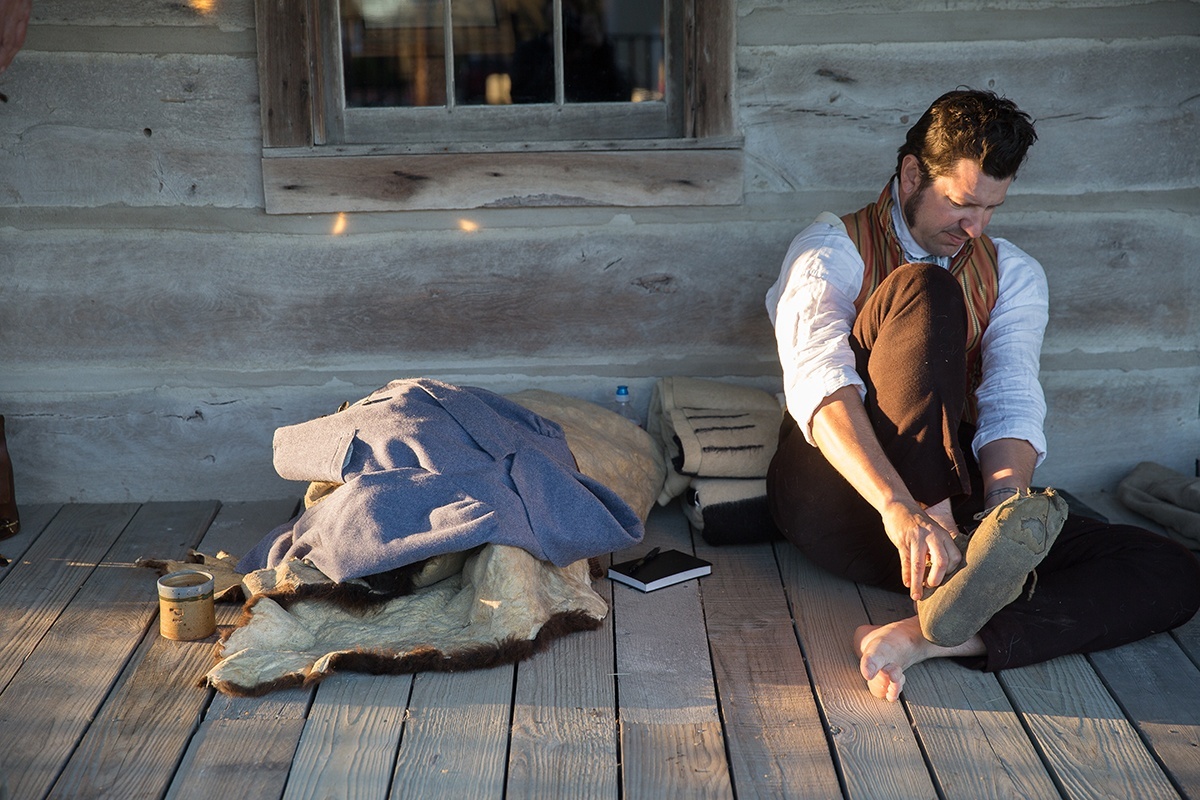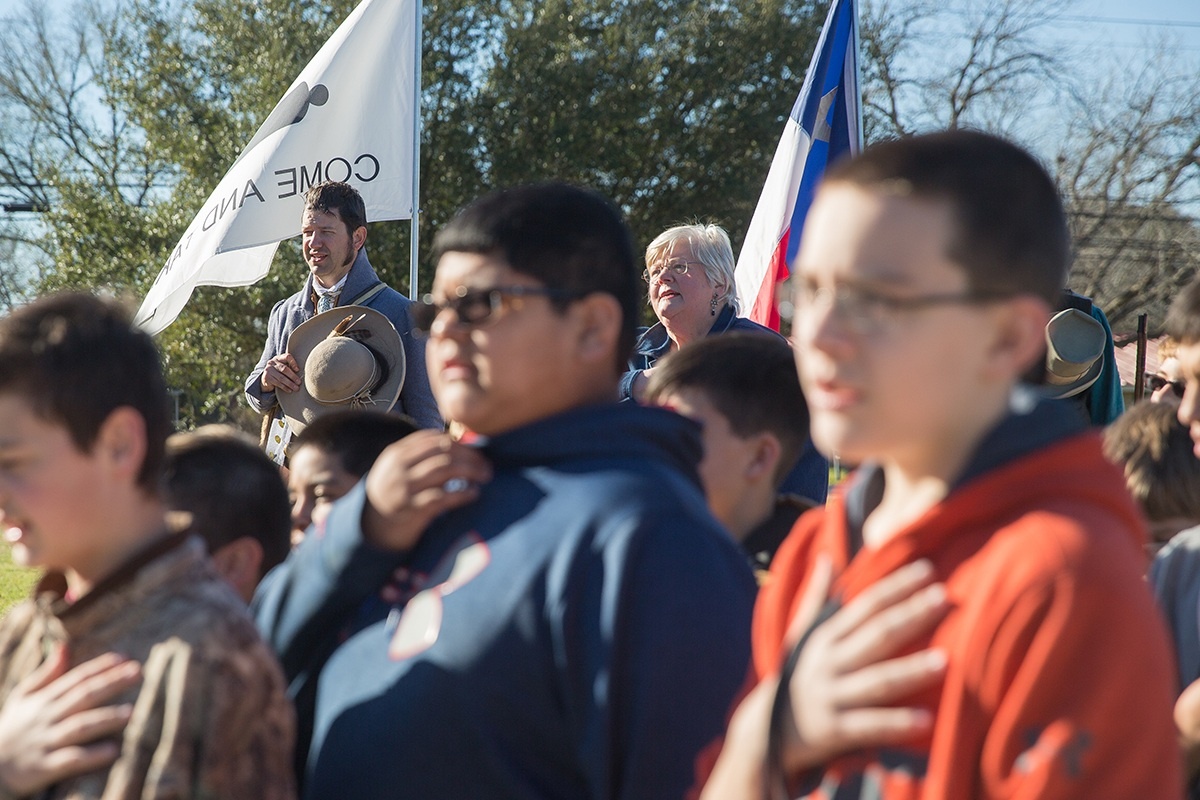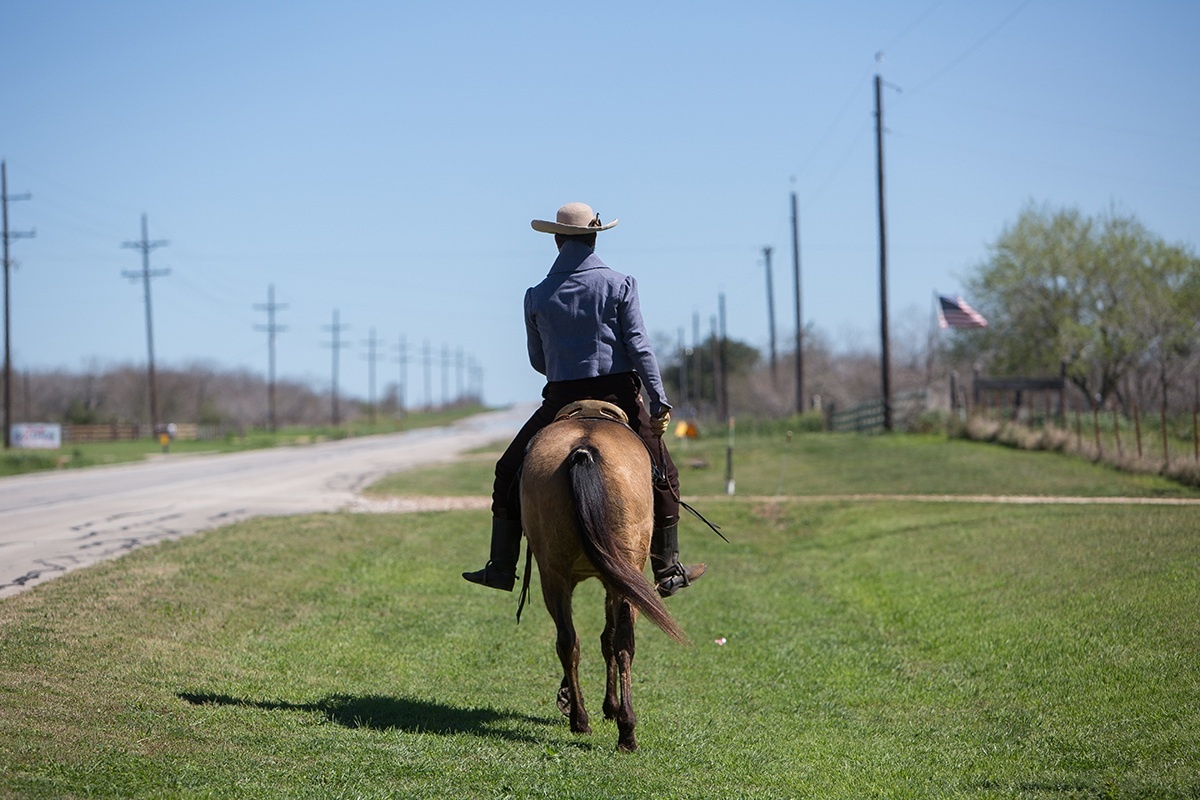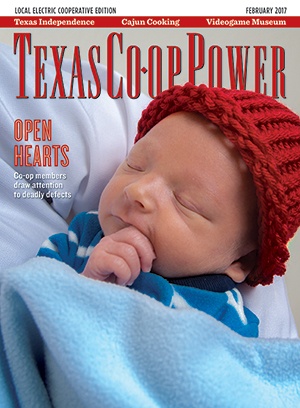On a cold and windy morning in February 2016, Scott McMahon rode his white mare, Gypsy, onto the stone plaza in front of the Alamo. Dressed as a Texian from the 1830s, McMahon offered a glimpse of what the plaza might have looked like in 1836 when Gen. Antonio López de Santa Anna besieged the mission. This was the first stop in a grand adventure for McMahon: He would re-enact the 1836 courier ride delivering William Barret Travis’ Victory or Death letter to the constitutional delegation at Washington-on-the-Brazos.
Even though it is regarded as the most famous document in Texas history, little had been done to recognize the path the couriers followed from the Alamo.
After a somber ceremony and a dramatic reading of Travis’ plea for help, McMahon accepted a copy of the letter. Cameras clicked and Gypsy pawed the ground as McMahon tucked the scroll into his saddlebag and galloped away toward the east. Gypsy’s hooves clattered on the paving stones, but a short block later, horse and rider stopped so McMahon could guide Gypsy into a waiting trailer, next to 9-year-old gelding Buck. They drove away from the asphalt freeways of San Antonio so they could begin the next stage of their ride near Seguin.
No one had done much to commemorate this historic ride in the 180 years since it happened, according to the research done by McMahon, the director of Presidio La Bahia in Goliad, site of a massacre of Texians three weeks after the Alamo fell. The original couriers, Albert Martin and Launcelot Smither, made the ride in two or three days. McMahon would take a more leisurely 10-day route, stopping to talk with school groups and visit historic sites. He would sleep outdoors and rely on one support vehicle for help with the horses.
McMahon’s ride would add a new facet to the celebration of Texas independence. Every March, historians, re-enactors and curious Texans converge on the birthplace of the short-lived nation of Texas at Washington-on-the-Brazos. The quiet hamlet 80 miles northwest of Houston was where 59 delegates gathered to declare independence from Mexico and draft a constitution.
McMahon, an avid historic re-enactor and former lead interpreter at Washington-on-the-Brazos State Historic Site, spent months crafting his period clothing and riding tack, as well as researching the probable route of the 1836 couriers. “I looked at old maps of Texas from the 1830s, compared them with modern maps and picked the route that followed the old roads and trails as closely as possible,” McMahon said.
The 2016 ride resumed near Seguin, where McMahon rode along the shoulder of the highway, taking in the south Texas scenery at a slower pace than did Martin, the first carrier of the letter who covered this route. Martin, a native of Rhode Island, came to Texas in the early 1830s and settled in Gonzales.
After receiving his orders and the letter from Travis, Martin made his way through enemy lines and headed for Gonzales. He heard relentless cannon fire and added a postscript to Travis’ letter describing the urgency of the attack and lack of supplies.
In the 1830s, this area around what became Seguin was sparsely settled, and the road was more a series of Native American trails and migration paths that eventually became the Camino Real. The town of Gonzales, 70 miles from the Alamo, was the first place Travis’ letter was read in 1836.
In 2016, the soundtrack for McMahon’s first day included the roar of speeding traffic instead of cannon fire. In Gonzales at the Eggleston House, an original dogtrot cabin from the 1840s and the oldest structure in town, he let the horses graze in the fenced yard, cleaned his tack and sharpened his knife as the sun set. He spread his blankets on the wide wooden porch and went to sleep as he would’ve in 1836.
In the morning, McMahon walked across the street to the Immortal 32 monument, honoring the 32 men from Gonzales who answered Travis’ call to come to the Alamo’s aid. Texas history students from nearby Gonzales Junior High, some of them direct descendants, read the names and biographies under blue skies.
In 1836, when Martin arrived in Gonzales, he handed the Travis letter to the second courier, Smither. Despite warnings from his father not to return to the mission, Martin then returned to the Alamo with the Immortal 32 and died during the final battle on March 6. Shortly after the fall of the Alamo, Gen. Sam Houston ordered the town of Gonzales burned as settlers and Texians fled east in what became known as the Runaway Scrape. Nothing of the original town remains.
McMahon told the students of Gonzales about the letter and the famous ride. His period clothes and tack brought history to life. The most popular demonstration of the day was firing rounds from a period rifle that left white smoke hanging in the air.
By midmorning, McMahon was again riding east. Schoolchildren ran to the fence as he passed, cars honked, people waved. Then he was alone again. Passing farm fields and pump jacks, McMahon continued east on Highway 90.
“What struck me the most was how much the country changes as you ride and how you really seem to notice it at a horse’s pace versus traveling the same route by car,” McMahon said.
In 1836, Smither added his own postscript to Travis’ letter, urging fighting men to gather at Gonzales. Smither, an Alabaman and future mayor pro tem of San Antonio, had come to Texas in 1828 and acted as an emissary between the Mexican army and the townspeople of Gonzales during the 1835 skirmish over the cannon. The skirmish is considered the first battle of the Texas Revolution and is marked by the Texians’ cry of “Come and take it!” when Mexican troops demanded the cannon be turned over to them.
Smither rode more than 90 miles in 40 hours to San Felipe de Austin, where the letter was printed on broadsheets and distributed. The Brazoria Texas Republican was the first newspaper to carry Travis’ letter, in its March 2 issue.
Thirteen miles along that route toward Shiner, McMahon camped under the spreading boughs of the 500-year-old Sam Houston Oak near the historic Braches House, which dates to the 1840s. The two-story, white clapboard home has changed ownership over the years and now stands empty, awaiting restoration.
On this site in 1836, Houston camped with his army after setting Gonzales aflame. In the early morning hours of March 14, they could see the glow of the flames that consumed the town. The group continued east, and Houston’s army defeated Santa Anna in the Battle of San Jacinto just one month later.
Continuing his own ride, McMahon met with 500 students and visitors at the San Felipe State Historic Site on Texas Independence Day. McMahon rode Buck down a gravel path toward the site where Stephen F. Austin founded his colony in 1823. He spent the afternoon in the shade of a replica cabin, talking with students who marveled at his bison blanket.
Nearby, students were sworn into a makeshift militia and mustered into formation with wooden rifles. In another cabin, a replica press printed Travis’ letter much as it had been printed in 1836.
Historic accounts are not clear about who carried Travis’ letter from San Felipe to Washington-on-the-Brazos, where the delegates were crafting a declaration of independence and constitution. The original letter or one of the broadsheets had probably arrived as the Texas Declaration of Independence was signed.
McMahon rode the last few hours into Washington-on-the-Brazos on March 4. There was little fanfare, but Texas flags flapped in the breeze as McMahon and Buck trotted up the main drive.
Preparations were underway for the weekend’s Independence Day festivities. Food trucks lined the drive and re-enactors made camp along the Brazos River. Park staff and early visitors applauded McMahon’s arrival, but there was no one to hand the letter to, no official ceremony marking the end of his journey. He was hours ahead of schedule, and almost two centuries late to save the Alamo. Travis’ letter was broadcast to Texas and the world, which were drawn by the power of Travis’ prose.
A final letter from Travis arrived at the delegation on March 6, and in it Travis implored his countrymen to “go on and make a declaration of independence, and we will then understand, and the world will understand, what we are fighting for.”
Travis died at the Alamo in the early morning hours, not knowing the declaration had already been signed. His words were received hours after his death, his countrymen not realizing the time for aid had passed.
——————–
Julia Robinson is an Austin photojournalist.
